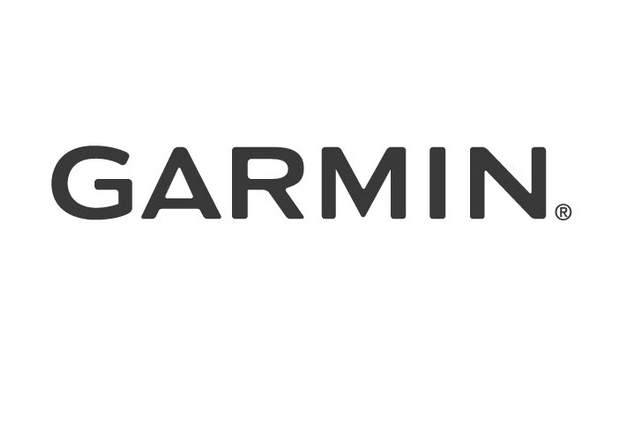It Doesn’t Get Any Better than This
The 2009 NIKE INDOOR NATIONALS
I've been accused over being overly exuberant in my writings and to the charge I plead
GUILTY!
In my defense I must point out how difficult it is to do otherwise. I mean c'mon! When you're writing about what may possibly be the GREATEST indoor track meet of ALLTIME, it's hard to not wax poetic nor to launch into flights of track nut ecstasy. This is a meet that saw FIVE (5) national high school records set within a three-day span! Usually it takes an entire season to even come close to that total. And lest you think otherwise, these were NOT soft records. Two were set by kids who already held the mark in their event, CONOR McCULLOUGH in the Weight Throw and WAYNE DAVIS in the 60mH. Due to an unfortunate timing problem, we did not get Davis' 55mH time for which we are deeply regretful. One of the sport's most venerable marks, BRAD HUDSON's 14:29.28n, 1984, was set just a few hours after it had been broken earlier in the day. LUKAS VERZBICAS' solo effort over 5000m, 14:18.42 (with a National frosh mark at 3000m, 8:23.80) and, although it was no record, a two mile split in the 9:04 range. The kid came back and set a National frosh record, 8:57.44 in winning the two mile. Unbelievably, track is NOT his primary sport! He considers himself a TRIATHLETE first, a track athlete second. I think/hope that may change.
But, I'm getting ahead of myself. First, a definition is in order. The word "great." What makes a track meet, operatic performance, fielding play, etc "great?" The American College Dictionary lists 16 different ways the word may be used. #4, 'notable or remarkable' seems to fit as does #6, 'of much consequence, important', OK, then how does the 2009 NIN measure up? Is it fair to describe the event as 'great?' Well, by either of the criteria just mentioned, absolutely! I doubt if anyone could find fault with a description of the competition as a 'remarkable' one nor could they argue the meet was not 'important' nor of 'much consequence.' A track and field meet that yields five national high school records is certainly remarkable and of much consequence. But merely mentioning those records doesn't begin to tell the whole story. Of 23 events, 20 had performances ranked in the Top Ten for the meet. I had intended listing them with names and performances but the list was simply too long. Some cry out to be recognized. The Girls 800 saw the second and third performers in the history of the meet. Two athletes ranking ahead of NCAA champions Geena Gall and Sarah Bowman; the Two Mile saw four youngsters move into the meets Top Ten and the race may have been the best indoor two mile of all time with only the 2002 race coming close. Jordan Hasay's 10:10.89 was #8-AT while Shelby Greaney's 10:24.11 ranks #22 on the AT list. The 4x800mR was the finest race in history with the #2, #3 and #4 performances in history! Southern Regional, 8:54.11, a mere .44 from the hsr and #2-AT; Newton South, 8:58.63, #3-AT; and Mountain Brook, 8:59.18, #4-AT firmly establish this race as history's finest. Give this some thought, Newton South runs 8:58.63, #3-AT, Mountain Brook clocks 8:59.18 and both are SOUNDLY beaten! Not even close!
Two events definitely rank close to the best ever, the 5000m and the DMR. Southern Regional's DMR team barely outlasted superb efforts by Shehendehowa and Mountain Brook, the race resulting in the #'3-7-17-AT! Only the 2004 race was better. In Southern Regional's wonderful performances the scintillating efforts by Jillian Smith and teammate Chelsea Cox must be recognized. Cox lead off the DMR with an awesome 3:35 1200 with Smith anchoring in 4:44.8. In 4x800mR action, Cox' 2:08.7 followed by Smith's 2:06.5 left them far in front but missing the national record by .44 seconds! (Ed. Note: Earlier I mentioned problems with the timing thus we have few official splits. Those quoted here are from Joe Lanzalotta's watch and are approximate.)
The 5000m saw six athletes move into the meet's Top Ten list. Chelsea Oswald's 17:03.82 coming in at #5-AT. Eleanor Roosevelt's wins in the 4x200mR and the 4x400mR both set meet records with their 3:43.52 placing them #8-AT.
By now you should be saturated with statistics. What about the drama of the meet? There was plenty to satisfy even the most-jaded tafnut! Laura Roesler and Stephanie Brown waged a tense battle over 800m. Roesler, from embattled Fargo, North Dakota would perhaps be a little short on training. But, she had clocked 2:03.08 last spring and is the #1 returnee. She was the odds-on favorite to win the event. Hold on! Brown's 2:08.00 elevated her to the USL spot and she wasn't going to go down easily. She didn't. For approximately 785m she held the lead, an upset in the making. But Roesler wouldn't have made the trip had she not felt capable of winning. Her final surge edged her past Brown and gave her a 2:08.80 - 2:08.97 victory. Sensational frosh Olicia Williams came in at 2:11.27 for third. With sixteen returnees under 2:10, it should be a great spring for the 800m distance.
Emily Lipari can generously be described as 'slight.' Well, her physical stature may be 'slight' but there's not a lion in the jungle with a bigger heart. She'd originally decided to skip this meet to attend a soccer game. But the lure of a national championship proved too strong. At the last minute she decided to come to Boston. So did Mississippi's Cory McGee and Melanie Thompson, New Jersey. For most of the race McGee and Thompson fought it out in the front. Lipari was, and I said as much, "…out of it." Wrong again. With about 100m to go and the front runners fighting, Lipari suddenly came alive! She closed the gap and stunned the leaders taking the lead with less than 10m left. Look at the times, 4:47.44 - 4:48.42 - 4:49.42, the closest three-way finish in the history of the meet. An aside: one of the nation's top track coach's ever, Paul Limmer, Mepham HS on Long Island, is one of the meet organizers. He almost became a meet casualty. One immediately knew Lipari was making her move when Limmer erupted, "Here she comes!" He leaped atop the awards stand, jumped up and down and gave everyone within 20 miles a glowing account of the young LI'er's surge. Her victory and a broken leg for Limmer, one happened, the other…he's still standing.
The two-mile had been billed as a chance for Jordan Hasay to break one of our sports greatest records, Melody Fairchild's 9:55.92 mark set in 1991. (Ed. Note: This marked the 25th anniversary of this type competition. But Nike took over the meet in 1999 and it was decided to begin a new list of top performances at that time. Hence, Fairchild's name is not to be found among the meet records.) But the wonderfully talented Hasay had never run indoors and thus had not had the opportunity to feel the effects of the ever present humidity. For the first mile the young Californian was on pace, matching Fairchild's splits almost to the second. But it was not to be. The humidity was too much and Hasay "faded" to the #3-AT effort of 10:10.89. Her 3000m split, 9:28.92, #4-AT was 11 seconds back of Fairchild's 9:17.7, the current hsr. It should be noted, Fairchild's race was run in the Carrier Dome, a vast arena seating almost 15,000 for basketball with a constant temperature and little or no humidity. Far more typical of indoor facilities, the Reggie Lewis Center, is humid, something with which the young West Coaster was unfamiliar. This was the first race in history that saw four dip under the 10:30 mark with Shelby Greany, 10:24.11, Emily Jones, 10:25.76 and Lindsay Flanagan, 10:27.79 leading the field.
As expected, South Carolinian Jasmine Stowers romped to an 8.30 win in the 60mH, good for T#7-AT but making her the fourth fastest ever in the event.
The relays have been pretty much covered as Southern Regional and Eleanor Roosevelt dominated, SR the distance types and ER the sprints. The latter also took the SMR, 4:02.32. The horizontal jumps offered two sensational performances and one broken heart, well, maybe cracked a little. Andrea Geubelle flew in from Tacoma, WA hoping to have a great meet. She did. Unfortunately, two other young women had similar ideas. Ciarra Brewer came into Boston as the USL in the Triple Jump off her 41-06 effort at the Simplot Games. But Geubelle was a mere 0.25 back and she wanted to go home with the ring symbolic of the Nike National champion. For almost the entire competition it looked as if her dream would come true. She opened with a jump of 12.63 (41-05.25) with Brewer second, 12.51. No one else was close. Brewer improved to 12.58 but could get no closer. Geubelle had two quality fouls, one which appeared to be in the 42' range. Going into the final jump Geubelle still held a slim, 0.05cm. But Brewer is a champion and champions do their best work under pressure. She came down the runway, planted with her toes close to the edge of the board and landed 12.81 (42-00.50) away, good for the win and the USL. Geubelle gave it a good shot on her final attempt, 12.54, good but not good enough. Crushed, she sat weeping, a dream shattered.
In the Long Jump, Brittany Porter put the event into her pocket with an opening, and winning, jump of 6.28 (20-07.5, #12-AT and the USL. Also, just ahead of two Olympians, Marshevet Hooker and Tianna Madison on the AT list.) Also opening well, Karynn Dunn at 6.09 (19-11.75) which was good for the silver. Geubelle's best effort, 6.04 (19-09.75) came on her final jump and was good for third.
The Pentathlon came down to the final event with two Midwesterners, Shakeia Pinnick, IL edging Michigan's Ariel Roberts, 3627 - 3617. Soph Nefertiti Smith out of tiny Norfolk Academy took the bronze, 3355.
In summary, there were 11 USL's produced by the young women, in Boston with three other winners already ranking #1 from other meets. Don't belittle this achievement. In early season meets there's always lots of #1 performances since there have been so few meets. But for a season-ending competition to produce 11 of the nation's BEST performances is little short of spectacular.
Now for the male half of the equation. "The DMR," replied AJ Holzherr when asked what would be the best event of the meet. He was right but not by much. In a meet where FIVE national high school records are set, how do you pick one over another? FIVE? That's right, FIVE. The first day produced two, Conor McCullough's 92-07.5 in the Weight and Lukas Verzbicas' 14:18.42 in the 5000m. Saturday saw West Windsor-Plainsboro North shatter the 4x1 Mile mark. Sunday gave the crowd Wayne Davis' 7.60 over the 60mH and Albemarle easily breaking the 4x800mR. Easy. Look at the results.
In the DMR, Albemarle's 10:02.13 ranks #2-AT. Then, Morris Hills, 10:06.06, #5-AT; West Windsor-Plainsboro North, 10:07.54, #7-AT and Western Albemarle, 10:12.96, #17-AT. Four of the Top 20 in history in the same race! The Albemarle anchor, Anthony Kostelac posted a brilliant 4:09.2 to get his team breaking the beam with the #2-AT performance.
This was WW-PN's second race. They had already run the 4x1 mile a few hours earlier so were a little tired. In the 4x1mile event their splits were Ryan Sleeper, 4:25.9; Tyler Corkedale, 4:21.9; and two sophomore brothers, Joe and Jim Rosa, 4:16.4 and 4:17.5 respectively. Remember, these times are from Joe Lanzalotta and are unofficial.
In 2005, Syosset set a mark, 7:42.22 that many thought would last a long, long time. No one told Buzz Male's Albemarle team. "They told me the night before they were going to set the record as a birthday present," Male commented after the race. Zach Vrhovac led off in 1:53.1 and that set the tone. Luke Noble's 1:54.9 kept things going. Then Garrett Bradley clocked a PB 1:57.3 and Anthony Kostelac brought it home in 1:51.8. Morris Hills took the silver, 7:43.91 with a 1:51.8 from their anchor, Liam Tansey. In any other year of the meet's history, Morris Hills time would have won the event. As it was, their clocking was the #6-AT.
WOW! But there were two individual marks quite worthy of recognition. Conor McCullough is the greatest weight/hammer thrower in the history of high school sports. In winning the Weight Throw, his 92-07.5 was, according to Bob Gourley, the events recognized guru, the first over 90' effort by anyone in history. The collegiates and open throwers use a larger implement but none had ever eclipsed 90'. McCullough stands alone.
So does Lukas Verzbicas. This young, ONLY A FRESHMAN, may develop into the finest distance runner ever. Consider, his 5000m time, 14:18.42 destroyed the 14:22.88 mark set earlier in the day by Solomon Haile, a senior whose age has been questioned. It also far outdid Brad Hudson's 14:29.28 set in 1984. Up until now, and perhaps in the future, running is NOT his primary pursuit. He spends much of his time prepping for Triathlon competitions! The time is also a national freshman record. The old mark? 15:51.71, Doug Smith, 2006. Look again. 14:18.42 - 15:51.71, a difference of 1:33.29. Now that's the way to break a record. His splits are stunning; 2:13 - 4:29 - 9:05 (3200), 8:23.80 (3000m - USL) and his final lap (200m) in 32 seconds. He came back to win the two mile in 8:57.44. His 9:05 en route would have placed him in the top five for the Open two mile! And he looks as if he were in junior high.
Wayne Davis' may have set two national records. He got credit for the 60mH, 7.60 but a timing miscue caused meet officials to miss his time at the 55m mark, a mark he already holds. Having been around this sport for over 60 years I feel slightly qualified to take a guess at what the 55m time might have been. Realizing most sprinters reach their top speed about 50-55m, it's reasonable to assume his final 5m; from 50m to 55m would have been his fastest. And between 55m and 60m he would be slowing down ever so slightly. Ergo, let's deduct .56 - .57 from his 7.60 and award him a time of 7:03-7.04. Unscientific to be sure but…it's only a guess.
If the DMR was the best event of the meet, what was the best RACE of the competition? My vote goes to the mile. One of the most knowledgeable t&f persons in the country, Larry Rawson, was awed by the mile run in Boston several weeks ago. In that race there were four athletes under 4:10. "I think that's terrific," he said in a recent conversation. He went on "How often do you see running like that?" I agreed but commented, "I think you'll see something special at Nike." We were both right.
The cast was basically the same, Andrew Springer, Pat McGregor and Mac Fleet. Only Drew Butler, 4th, 4:09.62 was missing. The pace was very fast with a pack of five/six hanging tough. With three laps to go, Fleet was bumped hard by Alex Hatz with Hatz falling and Fleet breaking stride and falling back a few meters. On the ensuing lap the two tangled again but no one fell. However, Fleet was clearly upset. He stormed back and, just as a few weeks earlier, he came on with a rush. This time he ran out of race and took third, 4:08.65. McGregor, 4:08.61 and Springer, 4:08.47 held the Californian off. Now, does three under 4:09 equate to a better race than four under 4:10? And how much were the fourth and fifth place finishers impeded? Tyler Stutzman's 4:10.13 took fourth and Alex Hatz came in at 4:12.49. It was a great race, a little better than the earlier one between these same adversaries. But, watch out for Fleet outdoors! I've been to a few thousand track meets in my day but I'd PAY to see him run this spring. If he comes to Greensboro to run the NIKE OUTDOOR NATIONALS, I predict he'll run well under 4:00. Remember, you heard it here first.
There were several other performances of note, all making the AT list. Stephen Saenz finally topped the 70' mark with a throw of 71-0.5, #7-AT; Erik Kynard's jump of 7-03 was good for the #12-AT slot; and David Wilson's 51-05.75 moved him into the same position in the triple jump.
The meet produced fourteen USL's along with three races won by New Bern but in events where they had already turned in a better effort, five national records, numerous 1-2 finishers in the nation along with a 1-2-3 finish in the mile and a national frosh mark for Verzbicas! WOW!
So, was it a "great" meet? In the words of Sarah Palin, "Y'er darn right!"
---




